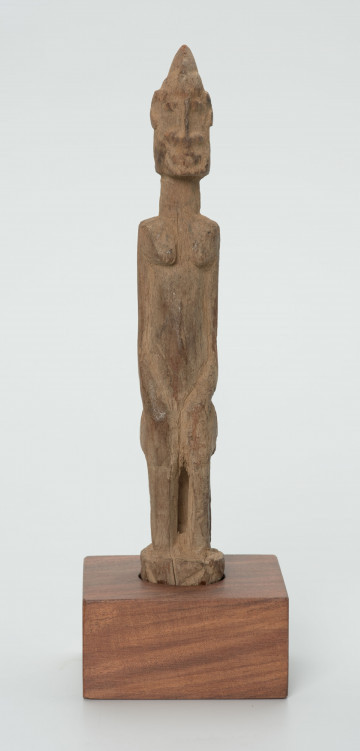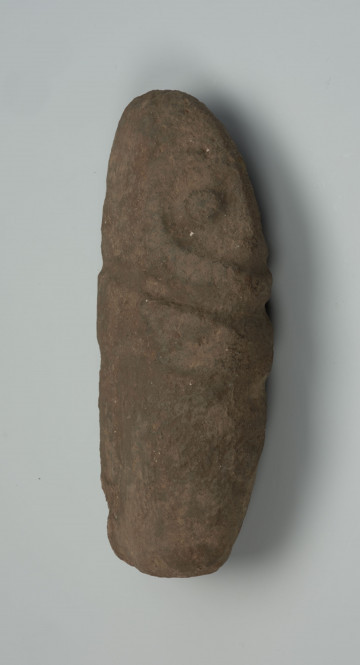
Figurine - ancestor
między 1901 — 1950
National Museum in Szczecin
Part of the collection: Collection of Dogonian art
The Dogon are people living in the south-central part of the Republic of Mali. Its number is estimated at 500-600 thousand. The largest concentration of their villages is found along a 150 km stretch of the Bandiagara Escarpment.The world of the Dogon women is little studied. All that is known about it comes from information obtained from men, as they always answer researchers' questions on behalf of their wives and daughters. The women are reluctant to talk about their lives and responsibilities, always explaining that they have a lot of work to do. The Dogon men, considering the attitude of young women capable of procreation and their character traits, distinguish three types among them and compare them to sheep, goats and snakes. Old women of postmenopausal age, on the other hand, are called yanw waru, i.e. buffalo women. These women are seen guardians of the secret lives of women, aware of the life-giving role their sex plays in society. The Dogon treat them as equals to men, admire their experience, but especially avoid eye contact, because according to them old women are endowed with secret powers and can bring misfortune on the ugly sex. The Dogon women do not actively participate in social life, but they do take part in all religious rituals, except, of course, those for which the Awa association is responsible (saints: Dama and Sigi).In everyday life, the Dogon woman enjoys great freedom and respect from the man. Although the boundaries between the world of men and women are very tight, their competences complement each other and balance each other, which influences the proper functioning of the Dogon society.
Ewa Prądzyńska
Author / creator
Dimensions
cały obiekt: height: 27 cm, width: 6,5 cm
Object type
figure
Creation time / dating
Creation / finding place
Identification number
Location / status

między 1901 — 1950
National Museum in Szczecin

między 1951 — 2000
National Museum in Szczecin

między 1951 — 2000
National Museum in Szczecin
DISCOVER this TOPIC
National Museum in Lublin
DISCOVER this PATH
Educational path